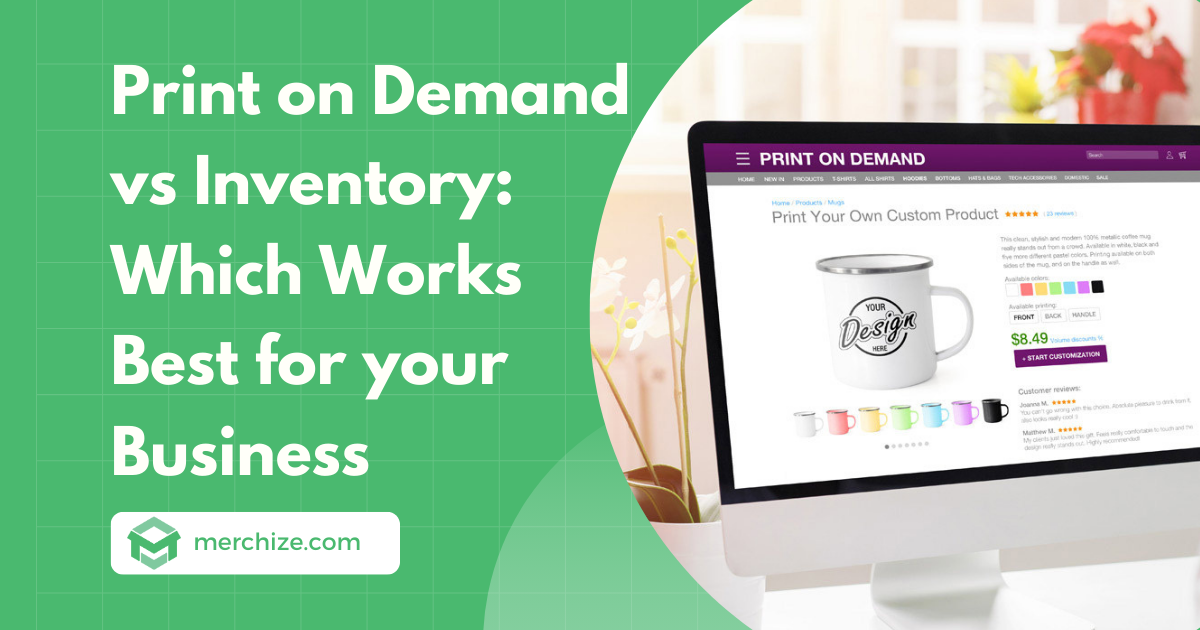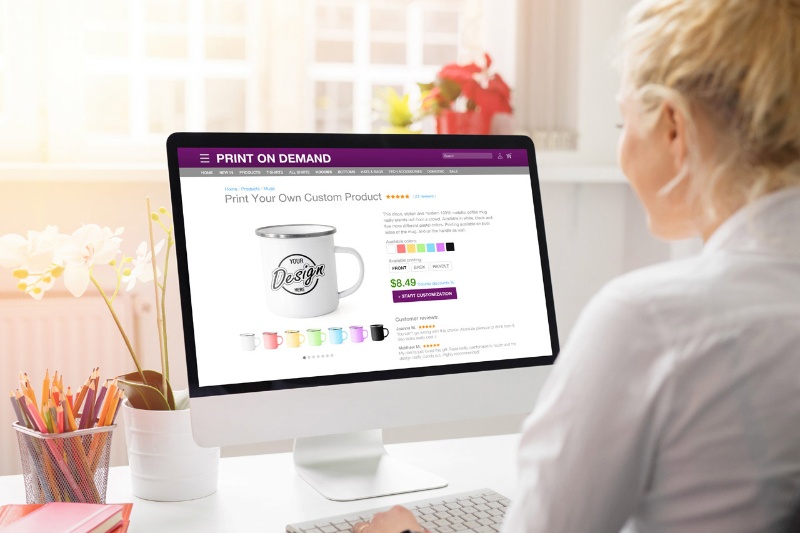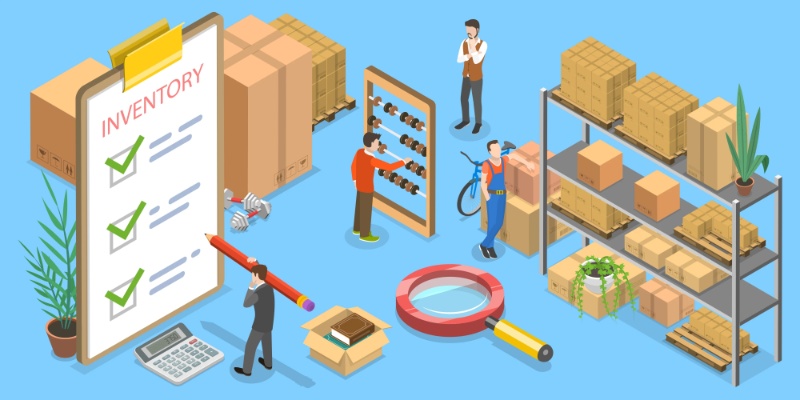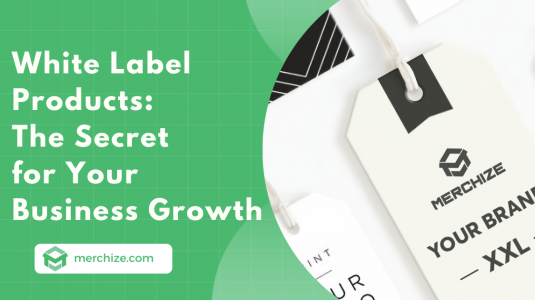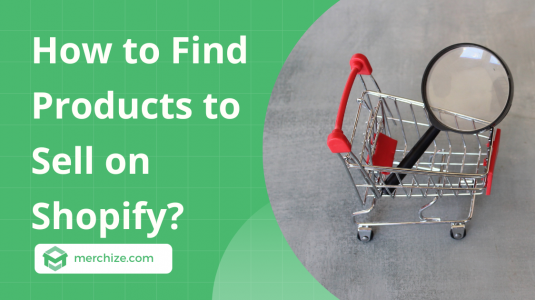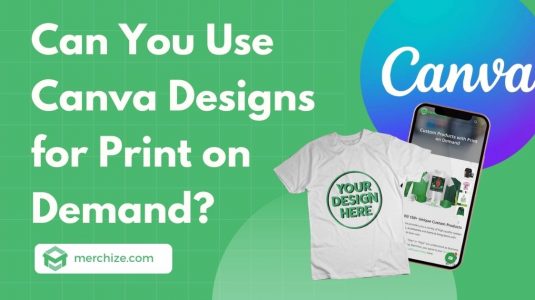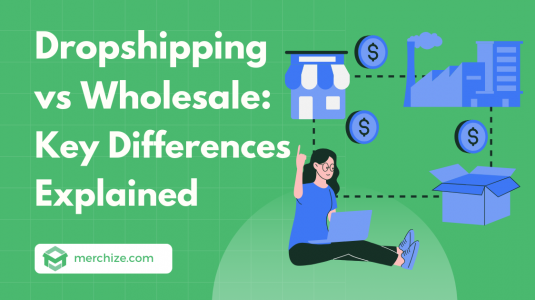Contents
Print on demand vs inventory? This is one of the common questions that are frequently asked by new business owners. To decide which business model is the better choice, you must understand how each model works, what are the differences, and how they fare against each other.
Let’s find the answer to this question now!
What is print on demand?
Print-on-demand has seen an upsurge in popularity in recent years.
For people who don’t know, print on demand is a business model that helps business owners sell products without owning and managing the inventory. Instead, a third-party supplier will help produce, pack, and deliver orders on behalf of merchants.
Print on demand is somewhat similar to dropshipping. Another thing that distinct print on demand from other models including dropshipping is that it allows you to manufacture products with your own designs and products are only made on demand. In other words, you can control what products are made, when, and how many.
Benefits of Print on demand
Print on demand, with high flexibility and low upfront cost, has lowered the entry bars and opened doors for many aspired entrepreneurs to start their own online businesses. Here are a few reasons that make print-on-demand the go-to option for business starters when they first start.
- No upfront cost: No need to purchase products in advance. You only have to pay when your customers buy your products.
- No inventory: Since there is no stock to begin with, you won’t have to think about managing your inventory. It also means that you don’t have to pay for warehousing or keeping inventory.
- Lower risk: Lower upfront costs and no unsold stock will lower the risk of losing money from your ends.
- Unique product offers: With the ability to customize products with your own designs, you will be able to produce unique offers that differentiate you from other competitors.
- Scalability: Compared to the normal business model, print on demand makes it super easy for you to expand the scale of your business. Production and distribution are in the safe hands of print-on-demand suppliers who have the facility and expertise required to power your growing business.
- Cross-border business: Print on demand allows you to deliver your products to other countries easily with optimized cost and seamless procedure.
>>> Also read: How to start an online store without inventory
What is the traditional inventory model?
With the traditional inventory model, you will have to buy products and transport these products to a warehouse where you keep your inventory. As you market and sell products to your customers, you and your team will be in charge of packing and shipping products to customers. Of course, there are inventory services that can help you out in this process.
However, even with the help of outsourced inventory management, business owners are still responsible for decisions regarding the inventory, for example, how many products to purchase, and when and how many products to restock, especially, what to do with the unsold inventory.
Pros and Cons of conventional inventory
Pros:
- Fast order fulfillment: Since the inventory is pre-stocked and shipping-ready, when an order arrives, it will be processed–packed and shipped–right away. With faster fulfillment, the customers will be more happy and satisfied.
- Bulk purchase discount: When buying products in bulk, you can enjoy better prices from suppliers, which lowers the cost per unit and increases the product margin.
- Complete control over the inventory: When owning the inventory, it is much easier to keep track of the current stock, what products are about to run out of stock, and what product needs to be cleared. In case of unexpected disruptions in the supply chain, production delays, or other emergencies, you are in control of the situation and can respond quickly.
- Have better quality control: Other than the quantity, you can also closely monitor the quality of the products to make sure that each product delivered to the customers is in good condition.
Cons:
- High upfront cost: Buying and keeping inventory isn’t cheap. You have to pay not only for purchasing products but also for warehousing and labor costs to keep the inventory. And it can be even more expensive if you can’t sell out your inventory.
- Higher risk: The more money you pay for inventory, the higher the financial risk if you fail to promote and sell your inventory. Moreover, managing a constant capital influx for restocking is also a major challenge that can make or break your entire business.
- Complicated process: Inventory management is a complicated process that demands a lot of time and effort. From precise tracking, effective stock rotation, and product preservation, all are required to keep your business running smoothly.
- Limited product options and customization: Normally, for this business model, you don’t have many options to further customize the products and increase your competitiveness.
Print-on-demand vs Inventory Business
Each model will have its pros and cons. In order to make the best decision, it is important to put them in comparison and weigh which one is better in different aspects.
Process
Print on demand is a much simpler process compared to the traditional inventory business.
With print on demand, you don’t have to purchase, store, package, or ship products. All of these inventory-related processes are handled by your print-on-demand supplier.
On the other hand, if you are determined to keep your inventory, you will have to deal with all the processes, from stocking, shelving, inventory tracking, stock rotation, and order fulfillment as well as handling returns and refunds.
Cost
As far as the cost calculation goes, print-on-demand is the superior option as it requires lower investment. You don’t have to buy products in bulk and pay for storage keeping and shipping products.
On the other hand, the traditional inventory business requires a huge upfront investment both for purchasing products and keeping inventory. This option makes more sense if you’ve already owned a large business with stable revenue and a huge customer base.
In this case, keeping inventory’s benefits can outweigh the challenges and optimize the running costs.
If you are just starting out and don’t want to risk a huge investment, print on demand could be the ideal solution. You can cut down the initial investment on buying and warehousing your inventory.
However, the downside is that the price for each print on demand item is much higher than if you purchase in bulk. To optimize the cost per product, you can opt for cheap print on demand suppliers that offers attractive base cost. At Merchize, for example, print-on-demand sellers can also enjoy tier pricing that benefits high-volume fulfillment with discount prices.
In general, print on demand is a less expensive, less risky but more convenient way to start your business.
Customization
Customization is one of the most noticeable benefits of print on demand. With this option, there is no limit on how much of a product you can customize. Even with just one order, your print-on-demand supplier can still print and fulfill the products for you.
Besides, the best part is that you can decide what designs you want to put on your products. With print on demand, you are not just selling the products but also the designs that come with it. The designs are also what attract customers and justify the higher prices that it costs for production and fulfillment service.
The power of customization and personalization allows sellers to experience more products and designs to find out what works best for them without worrying about failing and getting unsold inventory.
For the traditional inventory model, you have fewer options to customize your offering. You either buy the sale-ready products or order customized products in bulk. You won’t be able to customize the products by each order like you can do with print-on-demand.
Quality Control
Being in charge of the inventory means more control over the quality of your products. However, this can come as a two-edged sword.
On one hand, you can closely monitor the quality control process to avoid sending flawed products to your customers. On the other hand, it also means more responsibility on your part. Especially if you aren’t familiar with the inventory management procedure, when the orders flux in, you are more likely to make mistakes.
For print on demand, you will have to rely on your supplier to carry out proper quality control. What you can do in this case is to seek out reliable suppliers who are experienced, well-staffed, and well-equipped to handle your fulfillment orders.
Time
Time is incredibly valuable these days and ages. Ideally, we want solutions that cost less time for us and our customers. However, in reality, you must make a compromise.
You can save your time with print-on-demand as you don’t have to work on the fulfillment process. However, it would take longer for customers to receive their orders because it takes time to print the products before handing them out.
In case you already own the inventory, when the orders come, you can start packing and shipping products right away. It means that your customers won’t have to wait. Instead, it will take up more of your time to manage the fulfillment process.
Scalability
As your business grows, it’s natural for you to scale up your business to keep up with the demand and potential. During the process of scaling up, you might want to reconsider what business model works best for your business’s future.
For example, if you are starting small, you want to play it safe and try print-on-demand first. But as your online business gains momentum with large orders coming in, you might want to switch to a traditional inventory model in order to optimize the cost and increase efficiency.
However, if you are still skeptical about expanding your business and want to test the water first, it is highly recommended to stick to the print on demand model. Even when you are already working with a traditional inventory model, you can still dabble into new markets with a low-risk print on demand model.
Profit Margin
When it comes to profit margin, the traditional inventory model is hands down the winner. Even though it takes a large initial investment, over time, the per-unit cost might be significantly lower.
For print on demand, because each order is made individually, the cost for each item will be more expensive when compared to mass-produced orders, not to mention other additional costs regarding packaging and shipping.
The traditional inventory model can provide a higher profit margin but that’s the ideal scenario if you manage to sell out your products and avoid overstocking and obsolescence. In many cases, failure to manage the inventory can cause huge financial losses, which affects your overall profit margins.
Print-on-demand vs Inventory: How to Choose?
Starting your online business is an exciting venture, and choosing between Print on Demand (POD) and traditional inventory is a critical decision that can shape your journey. Each business model has its pros and cons. In order to decide which one works best for your business, here are some questions to consider:
Define business goals and needs
Before jumping into any planning or action, clearly define your business goals and needs. Are you looking for a low-risk model with minimal upfront investment? Or, do you anticipate a consistent demand for specific products that justifies bulk production?
Consider your product offerings and their shelf life. For example, if you’re planning to sell custom-designed t-shirts with ever-changing graphics based on trends, POD might be a more fitting choice. On the other hand, if you’re confident in the demand for a set line of products and can make a larger upfront investment, a traditional inventory model could be advantageous.
Consider financial capability
For new sellers, financial considerations are often a significant factor. If you’re working with a limited budget, POD can be a game-changer. With no need to purchase inventory upfront, you can allocate your funds to other crucial aspects of your business, such as marketing and website development.
Let’s look at an example: Suppose you’re passionate about selling unique handcrafted jewelry, but you’re unsure about the demand. Opting for POD allows you to test the market without risking excess inventory. As your sales grow, you can reassess your strategy and potentially transition to a traditional inventory model if it aligns with your evolving business goals.
Evaluate skills & strengths
Reflect on your skills and strengths as a new seller. Are you a creative individual with a flair for designing, or do you excel in managing logistics and operations? POD might be more aligned with your strengths if you enjoy creating designs and want a hands-off approach to fulfillment.
However, if you’re confident in your ability to forecast demand, negotiate bulk production deals, and manage inventory effectively, a traditional inventory model could be a great fit. Consider seeking advice or partnering with professionals who complement your skills to fill any gaps in your expertise.
Remember, the key is to choose a model that not only aligns with your current skills but also provides room for growth and development. As your business evolves, you can acquire new skills or bring in expertise to enhance your chosen model.
